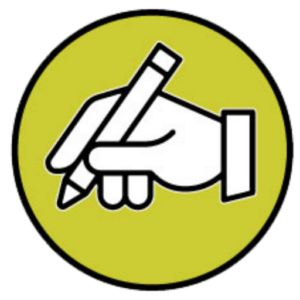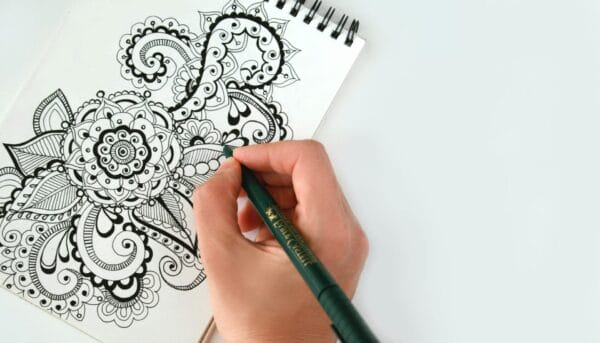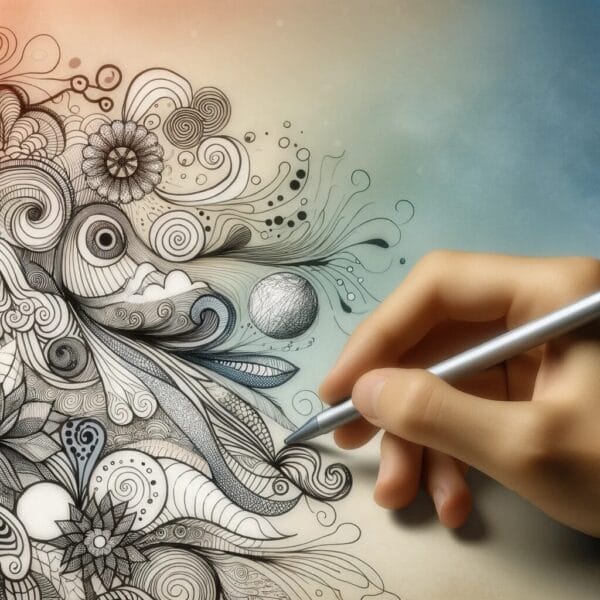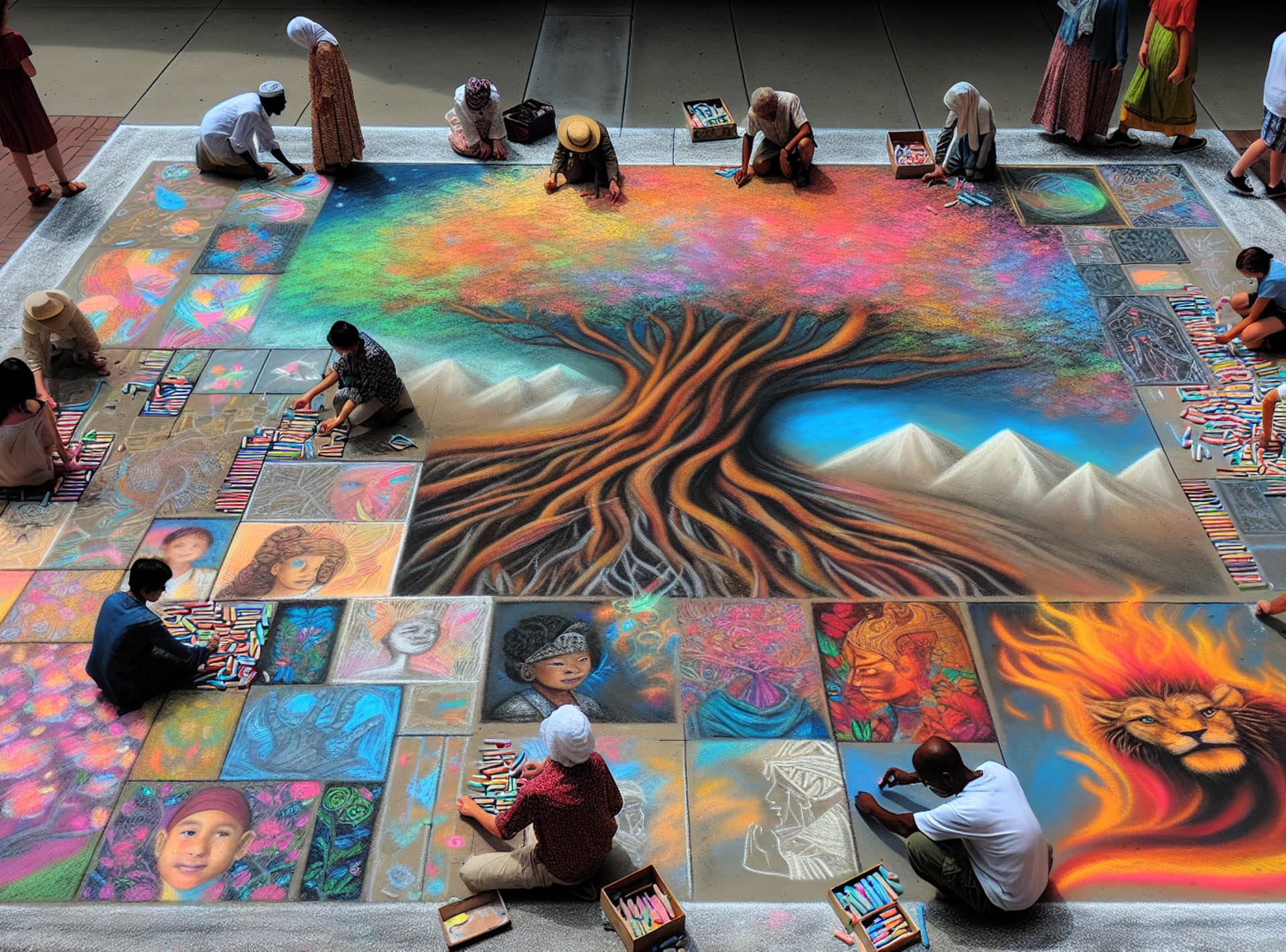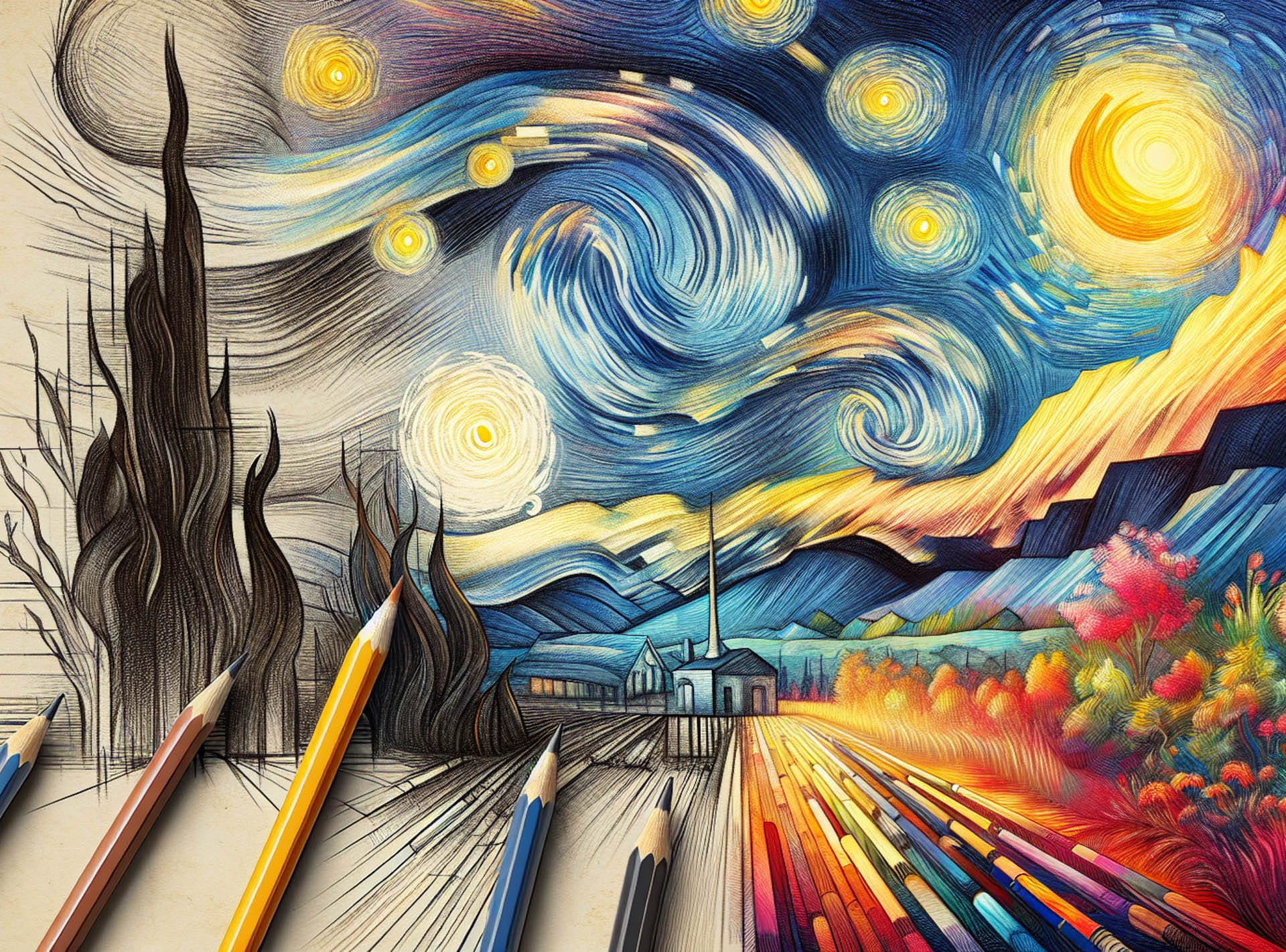Zentangle Drawing is a form of artistic expression combining meditation and creative doodling. It was created by Rick Roberts and Maria Thomas, who discovered that drawing specific patterns, or tangles, produced a state of focused relaxation akin to meditation.
Unlike other art forms, zentangle does not require a preconceived plan or an expected outcome. Each piece evolves stroke by stroke, offering a unique journey towards creativity and mindfulness.
The Benefits of Zentangle
Zentangle drawing is not just about creating beautiful art; it’s also about the positive effects it can have on your mental and emotional well-being. Engaging in Zentangle can help reduce stress, enhance focus, and foster a sense of tranquility. It is an accessible tool for self-soothing as it doesn’t demand high levels of artistic skill.
By concentrating on one line at a time, practitioners often find that their worries and anxiety drift away, replaced by a sense of calm and accomplishment. Zentangle’s meditative aspect also makes it a valuable exercise for improving mindfulness, which promotes overall happiness and cognitive health.
Getting Started with Zentangle
To dive into Zentangle, you only need a few basic supplies: a piece of paper, a fine-tip pen, and a pencil. Some enthusiasts use special square tiles for their drawings, but any paper will suffice. A key aspect of Zentangle is the use of structured patterns. Start by drawing a light square border with a pencil and dividing your space with a string, a freeform shape that will separate different patterns or tangles. Then, choose a tangle to start with.
There is no right or wrong; you can follow a tutorial for a specific pattern or let your intuition guide you. Fill in the sections created by your string with different tangles, using the pen for a bold, permanent effect.
The Process of Creating a Zentangle
The process of creating a Zentangle is as important as the finished product. Zentangle is typically done in a deliberate yet relaxed manner. Start by drawing your border and string. Choose a starting point and begin to draw your chosen tangles. Focus on each stroke, and don’t worry about the bigger picture; the design will emerge naturally.
If you make what you perceive to be a mistake, the Zentangle philosophy encourages you to incorporate it into the pattern, embracing flaws as unique contributions to the artwork. Remember, there are no erasers in Zentangle; every line is meant to be a part of the journey.
Exploring Patterns and Tangles
The world of Zentangle patterns, known as tangles, is vast and varied. Tangles are typically non-representational and abstract, with repetitive strokes like lines, dots, curves, and orbs. While you can create your own, there’s also a rich library of existing tangles, many of which come with step-by-step instructions to get you started.
The Zentangle community often shares their favorite patterns through books, online forums, and social media, making learning and experimenting with new designs easy. Each pattern can be adapted, rotated, or expanded upon, creating endless possibilities for creativity.
Joining the Zentangle Community
Zentangle has a warm and welcoming community, both online and offline. Many cities have Zentangle groups where you can join workshops and meet-ups. Online platforms like Instagram, Pinterest, and specific Zentangle forums host a treasure trove of inspiration and encouragement from fellow enthusiasts.
Sharing your work can be a rewarding experience, as it allows you to connect with others, gain feedback, and discover new techniques. Whether you’re a beginner or a seasoned zentangler, the community aspect of Zentangle can enhance your practice and provide a sense of belonging.
Zentangle drawing is much more than doodling; it’s a mindful practice that offers a respite from the hectic rush of daily life. It’s a simple and satisfying way to nurture your creative spirit and calm your mind. With just a pen and paper and the willingness to let go, you can start your Zentangle journey today.
